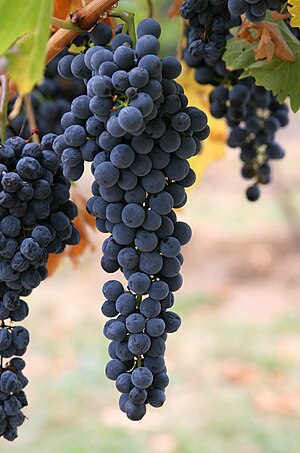Last week I was in the San Francisco area on business and over the weekend took the opportunity to visit Napa Valley wine country. Even here, where centuries of tradition and art are still applied to the production of wine, technology and science are also at work. I suppose that isn’t too surprising, as it is only about an hour’s drive to high-tech Silicon Valley.
From using hand held light analyzers to determine when a grape is perfectly ripe to planning vineyard irrigation for optimal stress of the vines, a good wine today is made not only from good grapes, but from good information – and lots of it.
The quality improvement pioneer William Edwards Deming reportedly once said “In God we trust; all others must bring us data”. A few miles north of Napa County, Kaj Ahlmann is taking that advice to heart at his Six Sigma Ranch vineyard and winery.
Coming from a background of mathematics and statistics while working in the insurance business, Ahlmann is looking to apply the principles of the mathematical approach known as Six Sigma to the art of grape growing and the process of winemaking. During his career in the corporate world, he saw firsthand the benefits of using Six Sigma methodologies and realized that it could also be applied to something a little more exciting than insurance – winemaking.
Six Sigma is an internationally recognized methodology created by engineers to manage the quality process in a variety of industries. Manufacturing, engineering and healthcare have all utilized Six Sigma approaches to deliver high quality products and better serve their customers.
Underlying the technique is a gathering of immense amounts of data related to a process and a rigorous analysis of the data to guide decision making.
At Six Sigma Winery, analytical methods are applied all across the winemaking process – from soil to sipping. Whether choosing the vineyard sites, selecting the vines to be grown, irrigating, pruning, harvesting, grape sorting, fermenting, aging, or bottling, data acquisition and analysis are a part of everyday life at Six Sigma Ranch.
Data is even analyzed for relationships between critic ratings and price, and correlations between rating and wine chemistry. Analytical chemistry is used to look at the amount of chemicals like tannin and anthocyanin and how those vary within different types of wine, whether it be Pinot Noir or Cabernet Sauvignon
While all this may sound sterile, the results are demonstrating success. The effort is making for a more consistent, high quality product. Several of Six Sigma’s red wines have been awarded “Best in Class” awards over the last few years.
And for those worried about scientific approaches replacing the creativity and art of winemaking, that is still a long way off. Today’s winemakers see modern methods as tools that are merely helping them come closer to their visions for each of their wines.
It’s an innovation we can all raise a glass to.
Related articles
- Why Are Tannins So Crucial to Red Winemaking (discover.winecountry.com)
- Machine picked grapes better for vintage – research (stuff.co.nz)
- Oakridge Chardonnay wines from 2011 – Local Vineyard Series, 864 wines and more (winefront.com.au)


